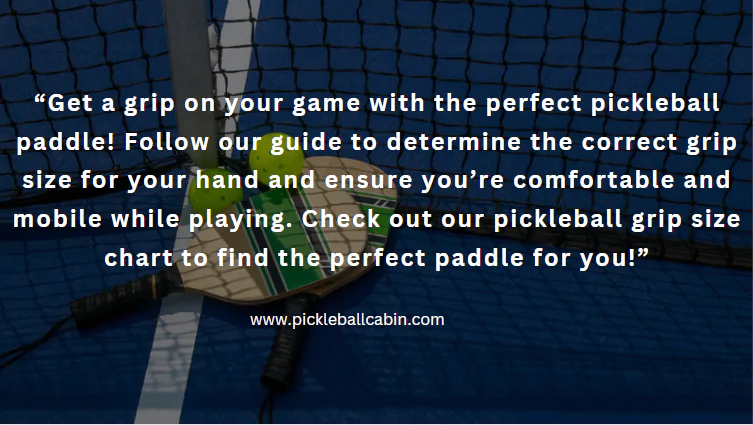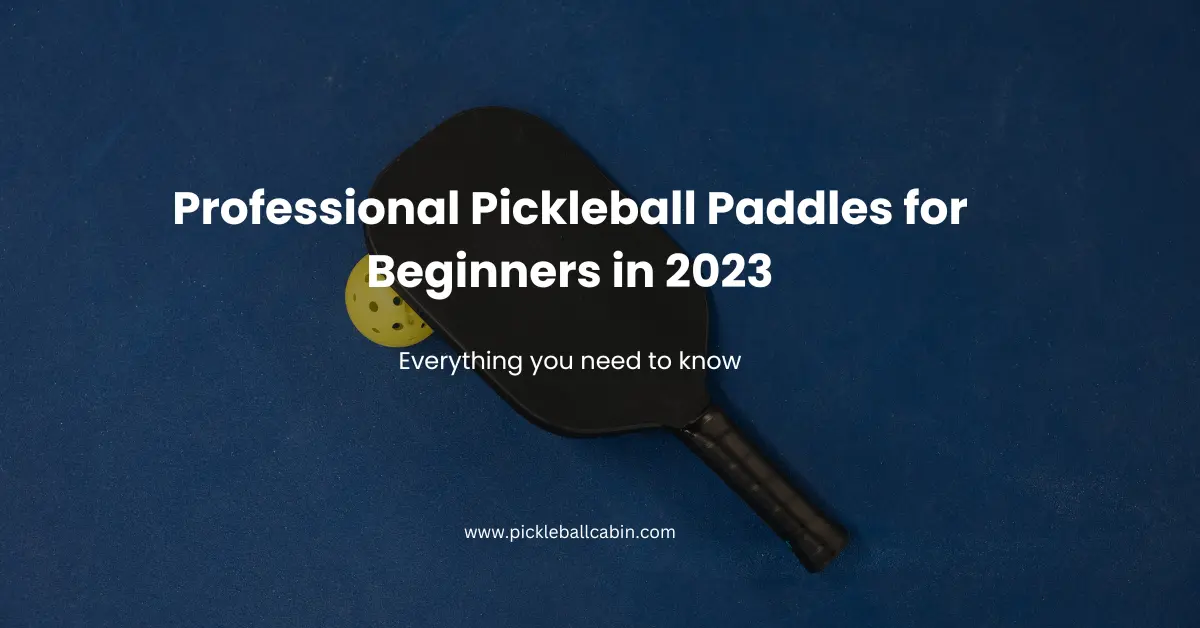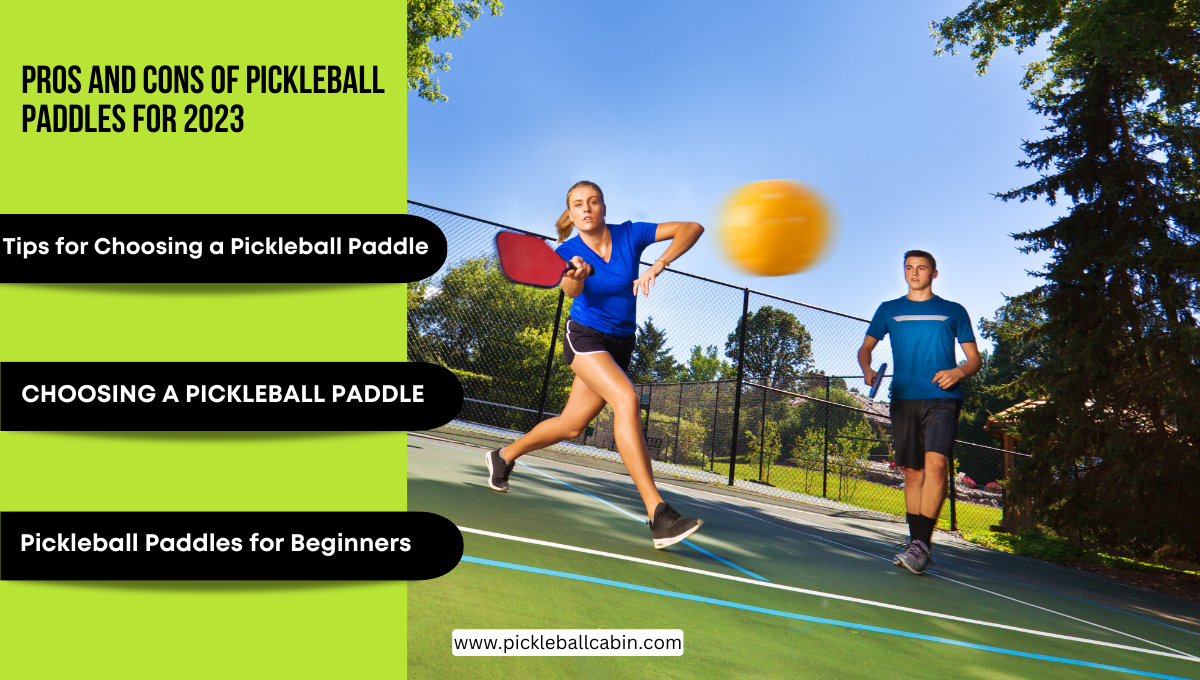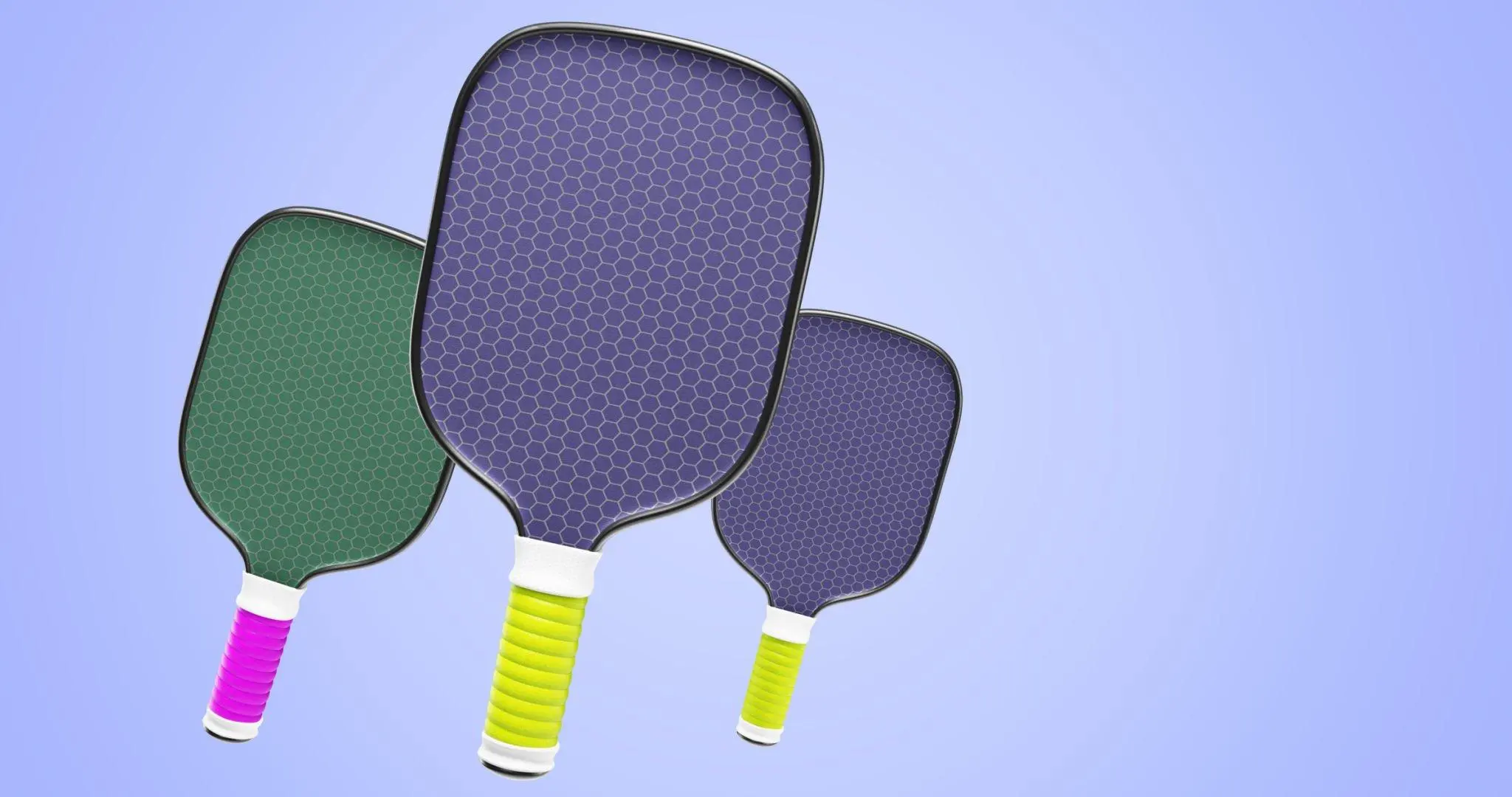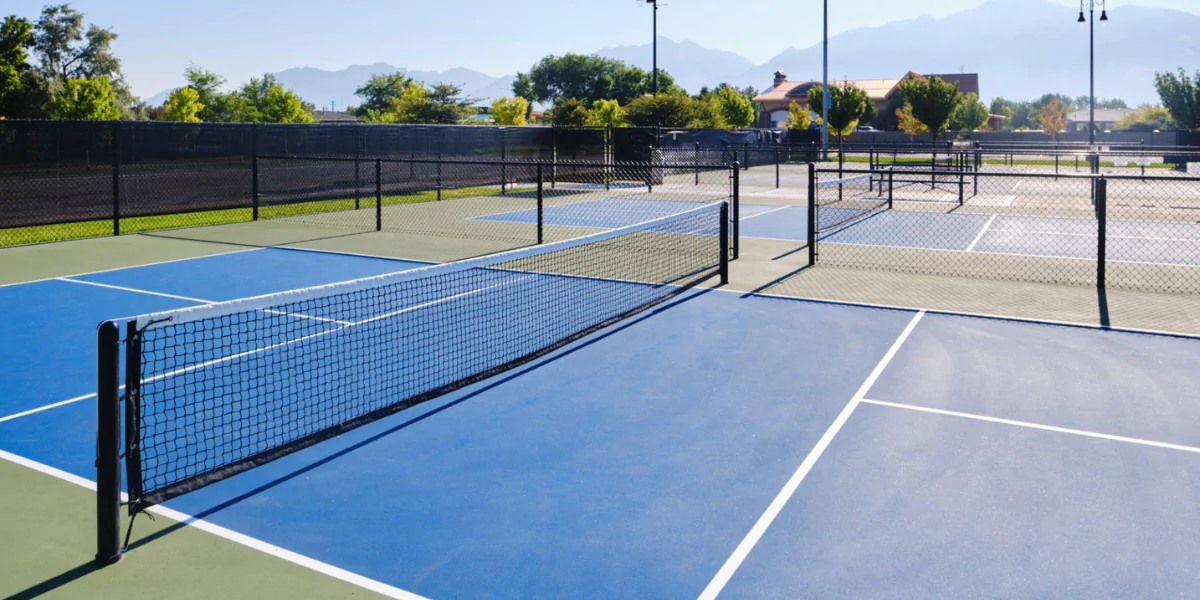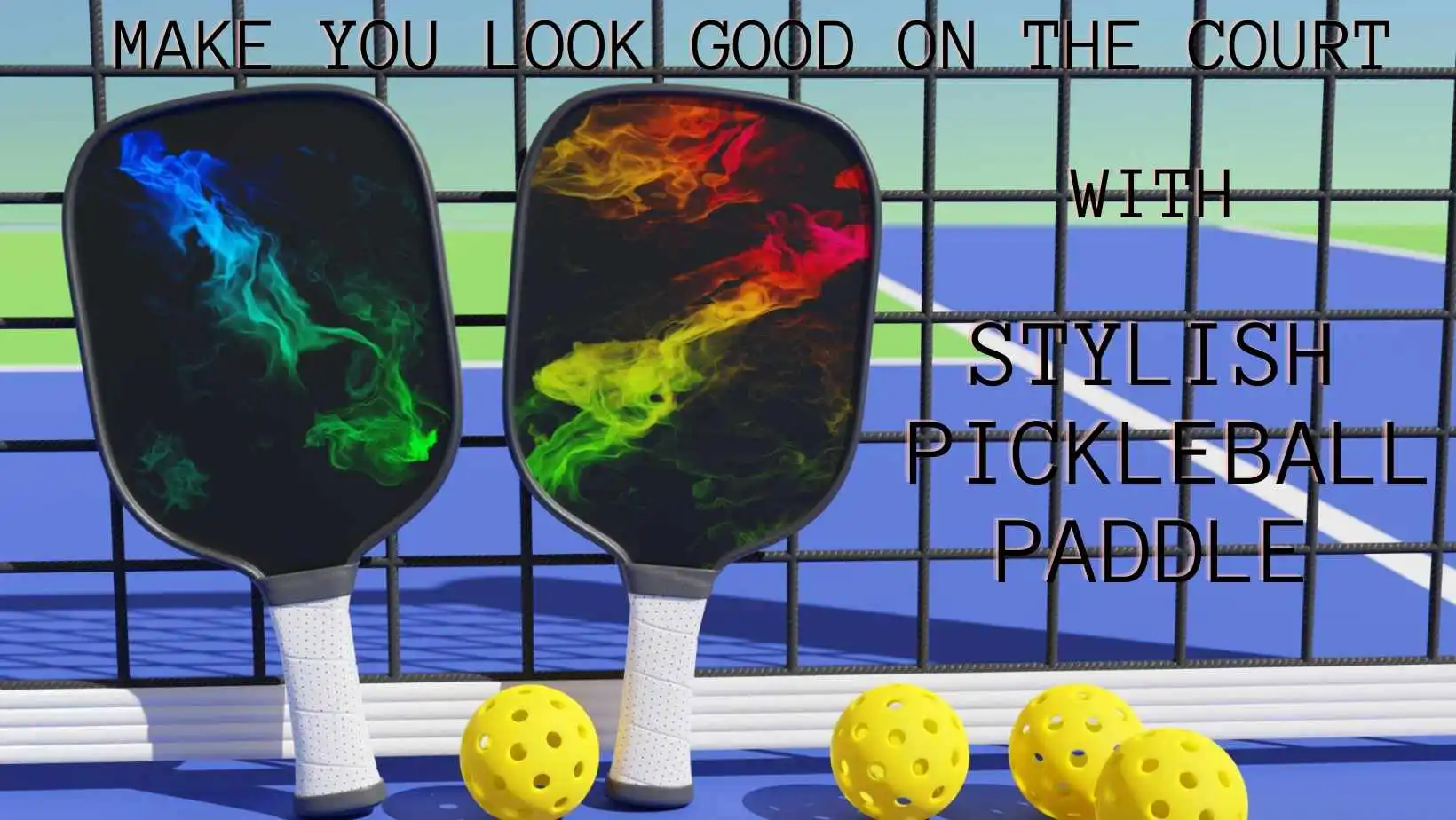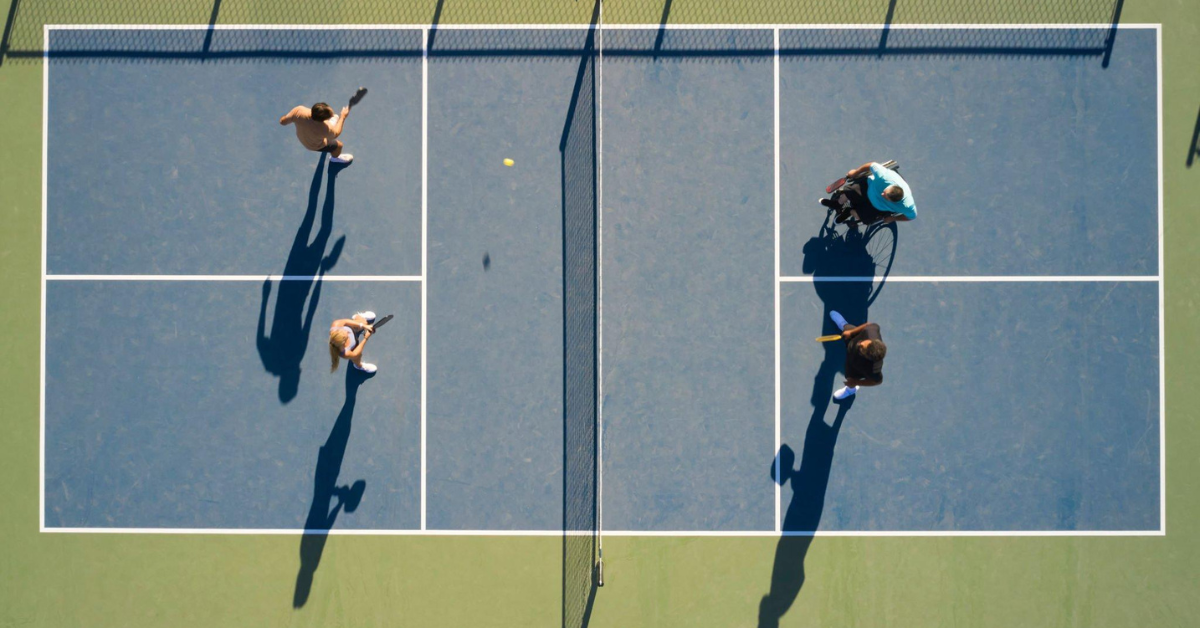How to Determine Pickleball Paddle Grip Size
The grip size of your pickleball paddle is the circumference of the handle, measured in inches. It is one of the most important factors that affect your performance, comfort, and safety on the court. A proper grip size can help you generate more power and control your shots, as well as prevent injuries such as tennis elbow and wrist pain.
But how do you find your pickleball grip size? And how do you choose a pickleball grip that suits your needs and preferences? In this article, we will answer these questions and provide you with a pickleball grip size chart that you can use as a reference. We will also give you some tips and tricks on how to choose the right pickleball paddle grip size for your hand size, grip style, and type of pickleball you play.
Why Does Grip Size Matter?
The grip size of your pickleball paddle matters because it affects how you hold and swing your paddle. A grip size that is too small or too big can cause you to lose control, accuracy, and power on your shots. It can also make you grip your paddle too tightly or too loosely, which can lead to fatigue, blisters, and injuries.
A proper grip size, on the other hand, can help you achieve a natural and comfortable grip on your paddle, which can improve your technique, consistency, and confidence on the court. It can also help you prevent common pickleball injuries, such as tennis elbow, wrist pain, and finger sprains.
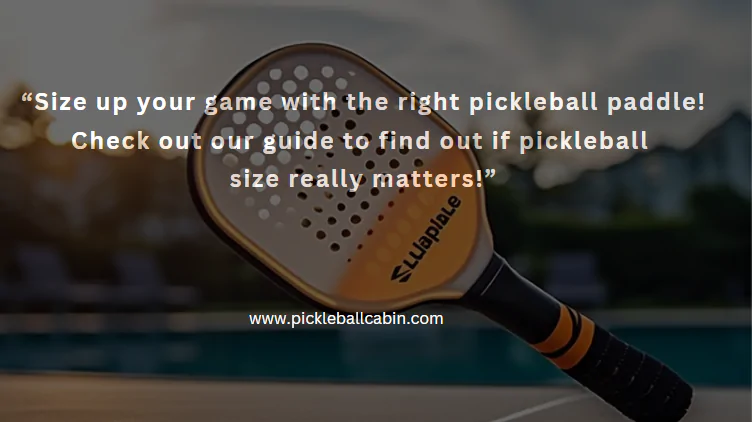
How to Find Your Pickleball Grip Size
There are a few different ways to find your pickleball grip size, depending on what tools and methods you have available. Here are some of the most common and reliable ways to measure your grip size:
- Ruler test: This is the simplest and most accurate way to find your grip size. All you need is a ruler and your hand. To do this test, you need to measure the distance from the base of your palm to the tip of your ring finger. This is your grip size in inches. For example, if the distance is 7.5 inches, then your grip size is 4.5 inches. You can use the pickleball grip size chart below to find the corresponding grip size for your hand circumference.
- Index finger test: This is another easy and quick way to find your grip size. All you need is a pickleball paddle and your hand. To do this test, you need to hold a pickleball paddle with a natural grip, as if you were about to hit a ball. Then, you need to check the space between your index finger and your palm. If your index finger fits snugly between your knuckles and the base of your palm, then the grip size is correct. If your index finger doesn’t fit, then the grip size is too small. If there’s a lot of space between your index finger and your knuckles, then the grip size is too big.
- Natural grip test: This is another simple and effective way to find your grip size. All you need is a pickleball paddle and your hand. To do this test, you need to hold a pickleball paddle with a natural grip and close your eyes. Relax your hand and grip. Open your eyes and look at the position of your fingers on the paddle. If your fingers are evenly spaced and comfortable, then the grip size is correct. If your fingers are cramped or overlapping, then the grip size is too small. If there’s a lot of space between your fingers and the paddle, then the grip size is too big.
How to Choose a Pickleball Grip
Once you know your grip size, you can choose a pickleball grip that matches your preferences and needs. There are a few different types of pickleball grips available on the market, each with its own advantages and disadvantages. Here are some of the most common types of pickleball grips:
- Overgrips: Overgrips are thin grips that go over the existing grip on your paddle. They can be used to increase the grip size or to change the texture of the grip. Overgrips are easy to apply and remove, and they come in various colors and patterns. They are also inexpensive and can be replaced frequently. However, overgrips can also add extra weight to your paddle, and they can wear out quickly.
- Premium grips: Premium grips are thicker grips that are designed to provide more comfort and control. They are often made from absorbent materials, such as leather, rubber, or synthetic fabrics, to help keep your hands dry and prevent slipping. Premium grips are more durable and stable than overgrips, and they can also reduce vibration and shock. However, premium grips are also more expensive and harder to replace than overgrips, and they can also change the balance and feel of your paddle.
Tips for Choosing a Pickleball Grip
When choosing a pickleball grip, you should consider the following factors:
- Size: Choose a grip that is the correct size for your hand. A grip that is too small or too big can affect your performance and comfort. You can use the pickleball grip size chart below to find the right size for you.
- Texture: Choose a grip with a texture that you like. A grip with a smooth texture can provide a more consistent and comfortable feel, while a grip with a rough texture can provide more traction and grip. You can also choose a grip with a perforated or tacky surface to help with sweat absorption and prevent slipping.
- Absorbency: Choose a grip that is absorbent and comfortable. A grip that is too dry or too wet can cause your hand to slip or stick to the paddle, which can affect your control and accuracy. You can choose a grip that is made from materials that can wick away moisture and keep your hand dry, such as leather, rubber, or synthetic fabrics.
- Durability: Choose a grip that is durable and stable. A grip that is too thin or too thick can wear out quickly or lose its shape, which can affect your performance and comfort. You can choose a grip that is made from materials that can withstand frequent use and exposure to different weather conditions, such as leather, rubber, or synthetic fabrics.
How to Choose the Right Pickleball Paddle Grip Size
Choosing the right pickleball paddle grip size is not only a matter of measuring your hand and finding the corresponding grip size on a chart. There are also other factors that you need to consider, such as your hand size, grip style, and type of pickleball you play. Here are some tips on how to choose the right pickleball paddle grip size for you:
Consider Your Hand Size and Grip Style
Your hand size and grip style can affect how you hold and swing your paddle, which can affect your performance and comfort. Generally speaking, the smaller your hand size, the smaller your grip size should be, and vice versa. However, this is not a hard and fast rule, as some players may prefer a smaller or larger grip size than their hand size suggests.
Your grip style is also important, as different grips require different levels of pressure and wrist movement. For example, if you use a continental grip, which is a neutral grip that allows you to switch easily between forehand and backhand shots, you may prefer a smaller grip size that gives you more flexibility and control. If you use an eastern grip, which is a more angled grip that allows you to generate more topspin and power, you may prefer a larger grip size that gives you more stability and leverage.
Consider the Type of Pickleball You Play
The type of pickleball you play can also affect your choice of grip size, as different types of pickleball require different levels of power and control. For example, if you play singles pickleball, which is a more fast-paced and aggressive game that requires more power and endurance, you may prefer a larger grip size that gives you more leverage and stability. If you play doubles pickleball, which is a more strategic and finesse game that requires more control and accuracy, you may prefer a smaller grip size that gives you more flexibility and maneuverability.
Test Out Different Grip Sizes Before You Buy
The best way to find the right pickleball paddle grip size for you is to test out different grip sizes before you buy. You can do this by borrowing or renting different paddles from your friends, club, or store, and trying them out on the court. You can also use overgrips to adjust the grip size of your existing paddle, and see how it feels and performs. You should choose a grip size that feels comfortable, natural, and secure in your hand, and that allows you to play your best pickleball.
How To Determine Pickleball Paddle Grip Size: Expert Tips & Guide
Pickleball Grip Size Chart
The following pickleball grip size chart can help you find the approximate grip size for your hand circumference. However, you should remember that this chart is only a guide, and that the best way to find your grip size is to test out different paddles and grips on the court.
| Grip Size | Hand Circumference |
| 4 inches | 7 inches or less |
| 4.25 inches | 7.25 inches |
| 4.5 inches | 7.5 inches |
| 4.75 inches | 7.75 inches |
| 5 inches | 8 inches or more |
Pickleball Paddle Grip Size Chart: Find Your Perfect Fit Today
Additional Information About Pickleball Grip Size
In this section, we will answer some of the most frequently asked questions about pickleball grip size, such as:
- Can you change the grip size on your pickleball paddle?
- How to increase the grip size on your pickleball paddle?
- What are the different types of pickleball grips?
- How to choose the best pickleball grip for you?
Can You Change the Grip Size on Your Pickleball Paddle?
Yes, you can change the grip size on your pickleball paddle, either by increasing or decreasing it. However, you should be careful when doing so, as changing the grip size can also change the balance and feel of your paddle, which can affect your performance and comfort.
The easiest and most common way to change the grip size on your pickleball paddle is to use overgrips. Overgrips are thin grips that go over the existing grip on your paddle, and they can be used to increase the grip size by a fraction of an inch. Overgrips are also useful for changing the texture and absorbency of the grip, as well as for adding some color and style to your paddle.
However, overgrips are not a permanent solution, as they can wear out quickly and need to be replaced frequently. They can also add some extra weight to your paddle, which can affect your swing speed and power. Therefore, you should only use overgrips if you need a slight adjustment to your grip size, or if you want to experiment with different grip sizes before buying a new paddle.
Another way to change the grip size on your pickleball paddle is to replace the existing grip with a new one. This can be done by removing the old grip and applying a new one, either by yourself or by a professional. Replacing the grip can give you more control over the size, texture, and quality of the grip, as well as the durability and stability of the grip.
However, replacing the grip can also be more expensive and complicated than using overgrips, as you need to buy a new grip and have the tools and skills to install it. Replacing the grip can also change the balance and feel of your paddle, as different grips have different weights and thicknesses. Therefore, you should only replace the grip if you need a significant change to your grip size, or if you are confident and comfortable with the process.
How to Increase the Grip Size on Your Pickleball Paddle
If you find that your grip size is too small for your hand, you can increase the grip size on your pickleball paddle by using one of the following methods:
- Use an overgrip: An overgrip is a thin grip that goes over the existing grip on your paddle, and it can increase the grip size by a fraction of an inch. To use an overgrip, you need to wrap it around the handle of your paddle, starting from the bottom and going up to the top. You can use a scissors or a knife to cut off the excess overgrip, and then secure it with a tape or a ring. You can choose an overgrip that matches your preferences in terms of size, texture, and color.
- Use a premium grip: A premium grip is a thicker grip that replaces the existing grip on your paddle, and it can increase the grip size by up to a quarter of an inch. To use a premium grip, you need to remove the old grip and apply the new one, either by yourself or by a professional. You can choose a premium grip that matches your preferences in terms of size, texture, and quality.
What Are the Different Types of Pickleball Grips?
Pickleball grips are the ways you hold your paddle when you play pickleball. There are different types of pickleball grips, each with its own advantages and disadvantages. The most common types of pickleball grips are:
- Continental grip: The continental grip is a neutral grip that allows you to switch easily between forehand and backhand shots. To use the continental grip, you need to hold your paddle as if you were holding a hammer, with your index knuckle and heel pad aligned with the edge of the paddle. The continental grip is the most versatile and simple grip, and it is suitable for beginners and intermediate players. However, the continental grip can also limit your power and spin, and it can be difficult to use for overhead and volley shots.
- Eastern grip: The eastern grip is a more angled grip that allows you to generate more topspin and power on your shots. To use the eastern grip, you need to rotate your hand slightly clockwise (for right-handed players) or counterclockwise (for left-handed players) on the handle, so that your index knuckle and heel pad are aligned with the flat side of the paddle. The eastern grip is the most popular and effective grip, and it is suitable for intermediate and advanced players. However, the eastern grip can also reduce your control and accuracy, and it can be harder to switch between forehand and backhand shots.
- Western grip: The western grip is the most extreme and aggressive grip that allows you to generate the most topspin and power on your shots. To use the western grip, you need to rotate your hand even more clockwise (for right-handed players) or counterclockwise (for left-handed players) on the handle, so that your index knuckle and heel pad are aligned with the opposite edge of the paddle. The western grip is the most difficult and risky grip, and it is suitable for advanced and professional players. However, the western grip can also compromise your control and consistency, and it can be very hard to use for backhand and volley shots.
How to Choose the Best Pickleball Grip for You
There is no one best pickleball grip for everyone, as different grips suit different players, depending on their hand size, grip style, skill level, and playing style. However, here are some general tips on how to choose the best pickleball grip for you:
- Experiment with different grips: The best way to find the best pickleball grip for you is to try out different grips and see how they feel and perform on the court. You can use different paddles with different grip sizes and types, or you can use overgrips to adjust the grip size and texture of your existing paddle. You should choose a grip that feels comfortable, natural, and secure in your hand, and that allows you to play your best pickleball.
- Consider your hand size and grip style: Your hand size and grip style can affect how you hold and swing your paddle, which can affect your performance and comfort. Generally speaking, the smaller your hand size, the smaller your grip size should be, and vice versa. However, this is not a hard and fast rule, as some players may prefer a smaller or larger grip size than their hand size suggests. Your grip style is also important, as different grips require different levels of pressure and wrist movement. For example, if you use a continental grip, you may prefer a smaller grip size that gives you more flexibility and control. If you use an eastern grip, you may prefer a larger grip size that gives you more stability and leverage.
- Consider the type of pickleball you play: The type of pickleball you play can also affect your choice of grip size, as different types of pickleball require different levels of power and control. For example, if you play singles pickleball, you may prefer a larger grip size that gives you more leverage and stability. If you play doubles pickleball, you may prefer a smaller grip size that gives you more flexibility and maneuverability.
Conclusion
Pickleball is a fun and exciting sport that can be enjoyed by anyone, regardless of age or skill level. However, to play pickleball well, you need to have the right equipment, especially the right pickleball paddle grip size.
The grip size of your pickleball paddle is the circumference of the handle, measured in inches. It is one of the most important factors that affect your performance, comfort, and safety on the court. A proper grip size can help you generate more power and control on your shots, as well as prevent injuries such as tennis elbow and wrist pain.
To find your pickleball grip size, you can use one of the following methods:
- Ruler test: Measure the distance from the base of your palm to the tip of your ring finger. This is your grip size in inches.
- Index finger test: Hold a pickleball paddle with a natural grip. If your index finger fits snugly between your knuckles and the base of your palm, then the grip size is correct.
- Natural grip test: Hold a pickleball paddle with a natural grip and close your eyes. Relax your hand and grip. Open your eyes and look at the position of your fingers on the paddle. If your fingers are evenly spaced and comfortable, then the grip size is correct.
To choose a pickleball grip, you can use one of the following types of grips:
- Overgrips: Overgrips are thin grips that go over the existing grip on your paddle. They can be used to increase the grip size or to change the texture of the grip.
- Premium grips: Premium grips are thicker grips that replace the existing grip on your paddle. They can be used to provide more comfort and control.
When choosing a pickleball grip, you should consider the following factors:
- Size: Choose a grip that is the correct size for your hand.
- Texture: Choose a grip with a texture that you like.
- Absorbency: Choose a grip that is absorbent and comfortable.
- Durability: Choose a grip that is durable and stable.
To choose the right pickleball paddle grip size, you should also consider the following factors:
- Hand size and grip style: Choose a grip size that matches your hand size and grip style. Generally speaking, the smaller your hand size, the smaller your grip size should be, and vice versa. However, this is not a hard and fast rule, as some players may prefer a smaller or larger grip size than their hand size suggests. Your grip style is also important, as different grips require different levels of pressure and wrist movement. For example, if you use a continental grip, you may prefer a smaller grip size that gives you more flexibility and control. If you use an eastern grip, you may prefer a larger grip size that gives you more stability and leverage.
- Type of pickleball you play: Choose a grip size that matches the type of pickleball you play. Generally speaking, if you play singles pickleball, you may prefer a larger grip size that gives you more leverage and stability. If you play doubles pickleball, you may prefer a smaller grip size that gives you more flexibility and maneuverability.
- Test out different grip sizes before you buy: The best way to find the right pickleball paddle grip size for you is to test out different grip sizes before you buy. You can do this by borrowing or renting different paddles from your friends, club, or store, and trying them out on the court. You can also use overgrips to adjust the grip size of your existing paddle, and see how it feels and performs.
FAQs
Q: Does the tennis index finger grip test work for pickleball?
A: Yes, the tennis index finger grip test can also be used for pickleball. However, it is important to note that pickleball paddles are smaller than tennis racquets, so you may need a slightly smaller grip size for pickleball.
Q: Does pickleball grip size make a difference?
A: Yes, pickleball grip size can make a big difference in your game. A proper grip size can help you generate more power and control on your shots, and can also help to prevent injuries.
Q: What to look for in a pickleball grip?
When choosing a pickleball grip, you should look for a grip that is the correct size for your hand, has a texture that you like, and is absorbent and comfortable.
Q: How do I choose a pickleball grip?
To choose a pickleball grip, you can use the ruler test, index finger test, or natural grip test to determine your grip size. Once you know your grip size, you can choose a grip with a texture and material that you like.
Q: How to increase your pickleball paddle’s grip size?
If your pickleball paddle’s grip size is too small, you can increase it by using an overgrip. Overgrips are thin grips that go over the existing grip on your paddle. They can be found at most sporting goods stores.
